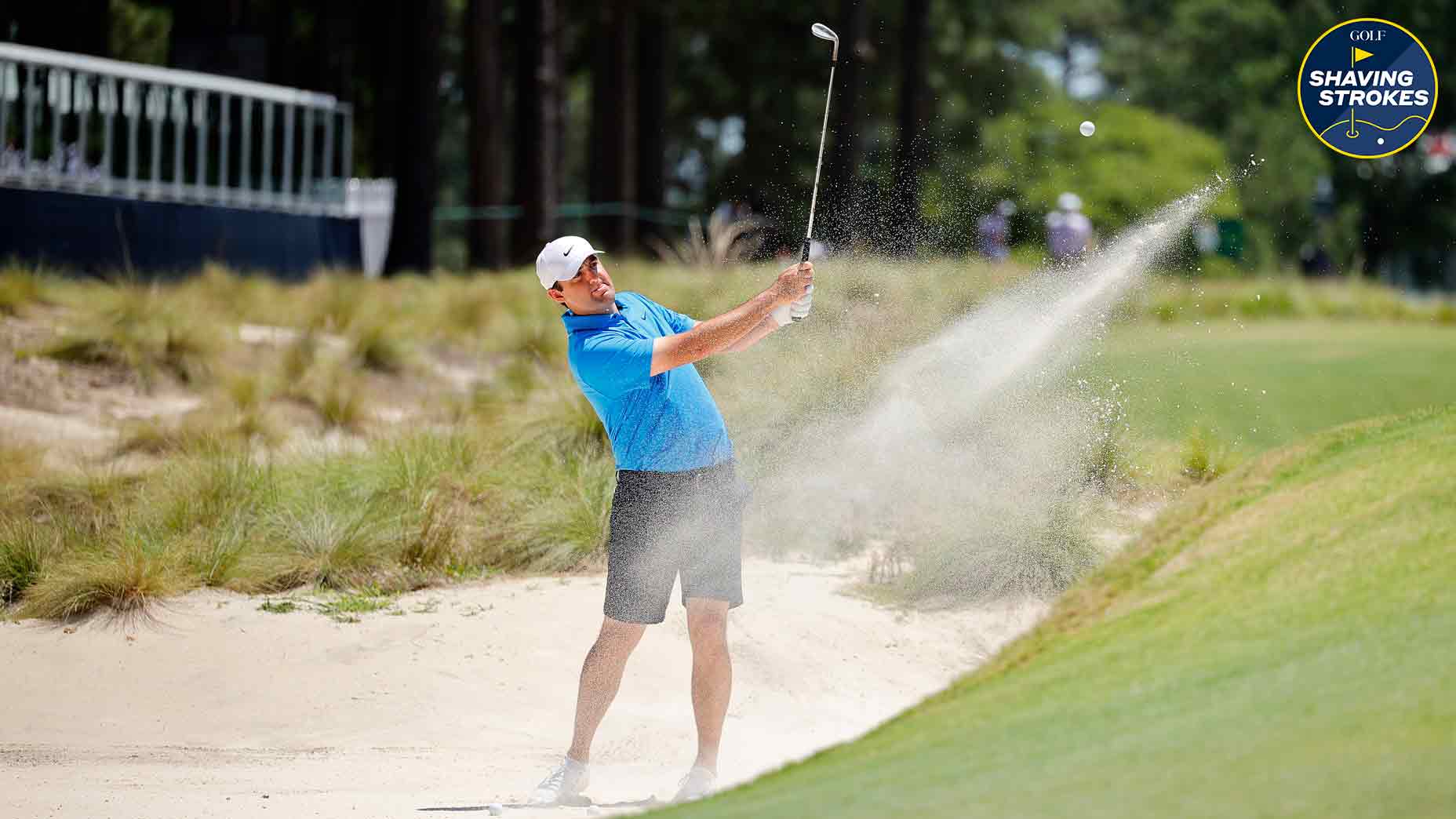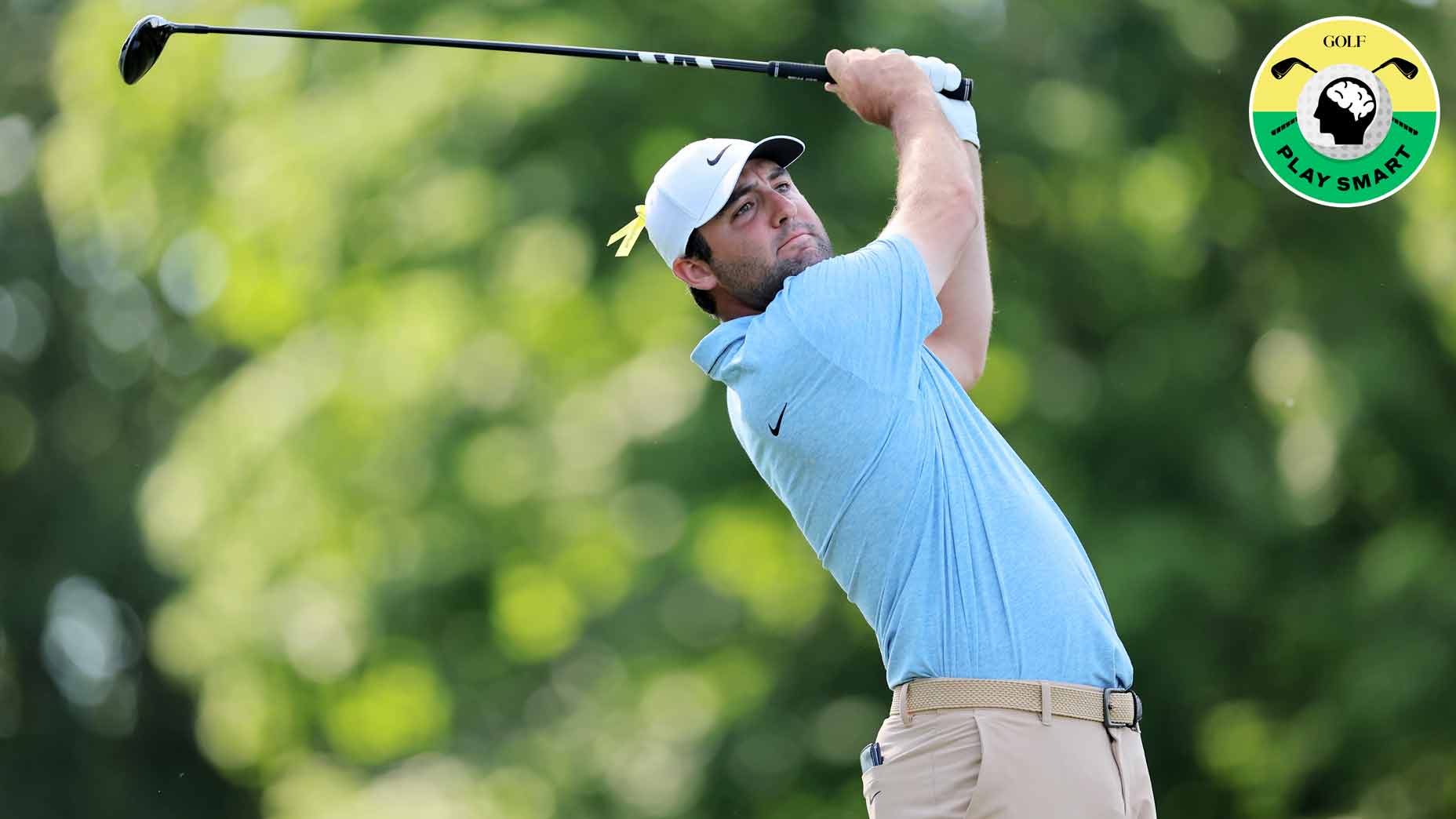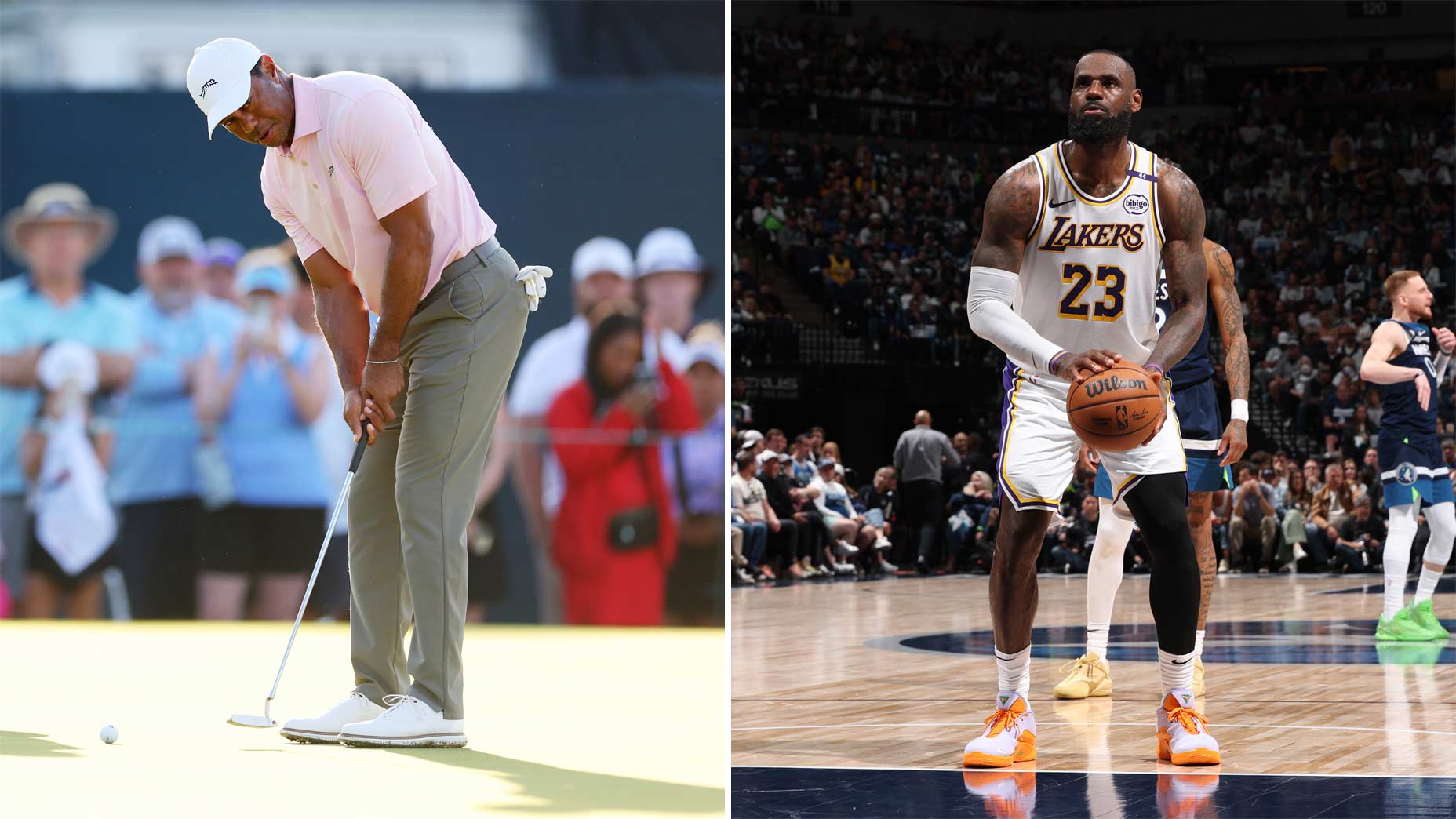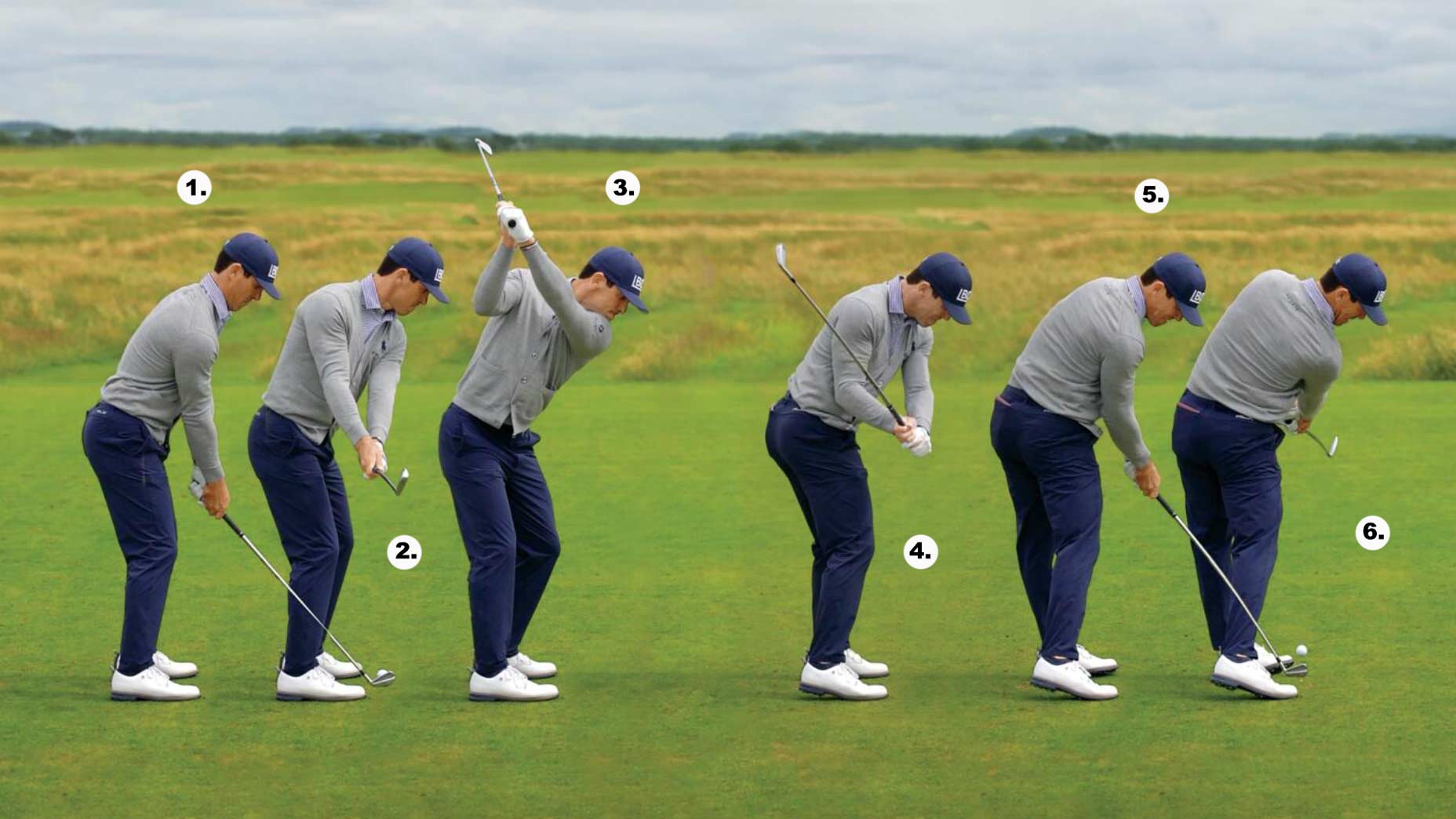Welcome to Shaving Strokes, a GOLF.com series in which we’re sharing improvements, learnings and takeaways from amateur golfers just like you — including some of the speed bumps and challenges they faced along the way.
What Scottie Scheffler has been able to accomplish so far this year is nothing short of spectacular.
Forget the five wins and 12(!) T10 finishes in his 13 events, or the Masters victory, or the nutty strokes gained stats versus the field — all of which are impressive — and focus on all the distractions that have joined his incredible run of golf.
He became a new dad last month, welcoming son Bennett with his wife Meredith. He also had that absurd run-in with the Louisville Police Department prior to Round 2 of the PGA Championship — and then went out to fire a five-under 66 on the day, ultimately finishing T8 for the tourney.
Scottie Scheffler is unbeatable right now. Here’s why, the game’s best sayBy: Nick Piastowski
Those two wild life moments would be enough to throw most men off of their game — but not Scheffler.
While there hasn’t been just one ingredient that has been the primary reason for Scheffler putting together one of the most dominant seasons in recent memory, there have been a handful of pieces that have helped him reach this level.
So instead of focusing on a game-improvement tip or an instruction drill like I typically do for a Shaving Strokes lesson, it might be best to sit back and absorb info from the world’s best golfer instead.
4 keys that have helped shape Scottie Scheffler’s incredible run
During a recent press conference leading up to this week’s U.S. Open from Pinehurst No. 2, Scheffler was asked all sorts of questions about the state of his game. From his first impressions on the layout to how he’ll handle some of the tricky shots near the green, all the way to the secret to his improved putting stroke, the top-ranked player in the world was refreshingly candid in his replies.
The keys for easily hitting a draw, according to Scottie SchefflerBy: Zephyr Melton
Rather than give some vanilla answers to the questions, Scheffler revealed some secrets that have contributed to his dominance.
Sure, neither you nor I have the ability that Scheffler has on the golf course, but that doesn’t mean we can’t learn some nuggets from him to improve our own games.
How Scheffler’s improved his putting this year
Many players often experience ups and downs in putting, which is why it’s the great equalizer in the sport. For the ones who can find the most consistency, they’ll always shoot the lowest scores — even if other parts of their game are slightly off.
Funny thing about Scheffler’s run thus far is this: He’s still outside of the top-70 in strokes gained: putting on Tour this season. It’s still an improvement over last year — when he ranked 162nd — so he detailed some of the changes in his approach.
“I mean, going now, I’m trying to get as visual as I can with what I’m trying to do,” he told reporters. “Before, I used a line on my ball, so sometimes I’d be trying to match up the line on the back of the putter with the line on the ball. At times I’d almost get a bit confused.
“Nowadays, I feel like I’m getting much more visual with what I’m trying to do, seeing kind of what I want the putt to do versus maybe playing a little bit of a guessing game before. I’m putting the ball down and lining it where I feel like it should be lined up and then hitting the putt.”
Why Scheffler seems so calm on the golf course (even after a rare bad shot)
Golf is a game full of uncontrollables, so learning how to accept and channel that is a key in going from good to great. Obviously, Scheffler is a master at this specific skill.
Watch how his demeanor stays the same throughout the round, and notice how he navigates each shot the same regardless of the level of difficulty.
Rather than get upset over a mishit (however rare it is), he takes his mind to a positive place and focuses on what he can control: From his pre-shot routine to his patience — which is something he mentioned when it comes to his ability to stay calm.
10 great things to do in and around Pinehurst, according to our local expertBy: Josh Sens , Ran Morrissett
“I’ve learned over the course of my career to stay as patient as possible,” he said. “When I made a triple-bogey [last week at The Memorial] , I really didn’t hit that bad of a shot, it just hit a tree and went out of bounds. I kind of reminded myself I was playing good golf, and as long as I kept a good head on my shoulders, I could continue to go about my day and was able to bounce back nicely.”
So how can an amateur follow suit? According to Scheffler, it all comes with experience in the moment on the golf course.
“I think that’s something you learn playing more and more golf, is that bad breaks are going to come, but it’s more about your response to those things than really receiving the bad break. Over the course of a 72-hole tournament [or whatever it might be], you’re going to get plenty of bad breaks and hit plenty of bad shots. It’s more about how am I going to recover from those shots.”
How to shape shots
As a mid-handicapper, shaping shots for me is still… tricky, to say the least. But for a player of Scheffler’s ability, he’s able to do it no matter how difficult the shot might be.
So what’s it take to gain the confidence to start experimenting with shot-shaping — and actually see success? Scheffler says it all comes down to preparation, and reminds amateur golfers that he never hits a shot during a tournament that he’s never practiced.
“A lot of it is just trial and error, learning what shots work, learning what shots don’t, so a lot of it goes back to my practice and preparation,” he says. “When I hit a shot in a tournament, it’s not a shot that I haven’t hit before. I’m never trying something that I haven’t done. When it comes to putting time and practice, I put time and effort into my form, and then I usually go right into hitting and creating shots. That’s always a huge part of how I practice and prepare.
“When I’m out there on the golf course, I’m never trying to do something I haven’t done before. I can always look back and remember practicing that shot and hitting it on the range and hitting it under the gun because it’s something that I’ve done before.”
How to control your mental game like Scheffler
As mentioned earlier, Scheffler’s ability to control his emotions and accept the outcome of each shot is part of what separates him from his peers. But for the average golfer like you or me, we tend to overthink and get frustrated on the golf course — even when we repeatedly tell ourselves to stay patient.
A top mental game coach shares the importance of having positive goalsBy: Julie Elion
So when Scheffler was asked about how he controls his mental game, he said it’s about two specific things: Committing to what he can control and not worrying about the results.
“A lot of the stuff that we all talk about is much easier said than done. It’s much easier to step up there and say, ‘hey, just be committed to your shot,’ but it’s a lot more difficult when you just bogeyed the first two holes,” he said. “I always remind myself to stay committed to what I can control, and I’m not worried about the results out there, I just try to do my best to execute the shot…It’s all about responding to the bad and kind of rolling with the good.”

TaylorMade Spider Tour X Custom Putter
View Product














